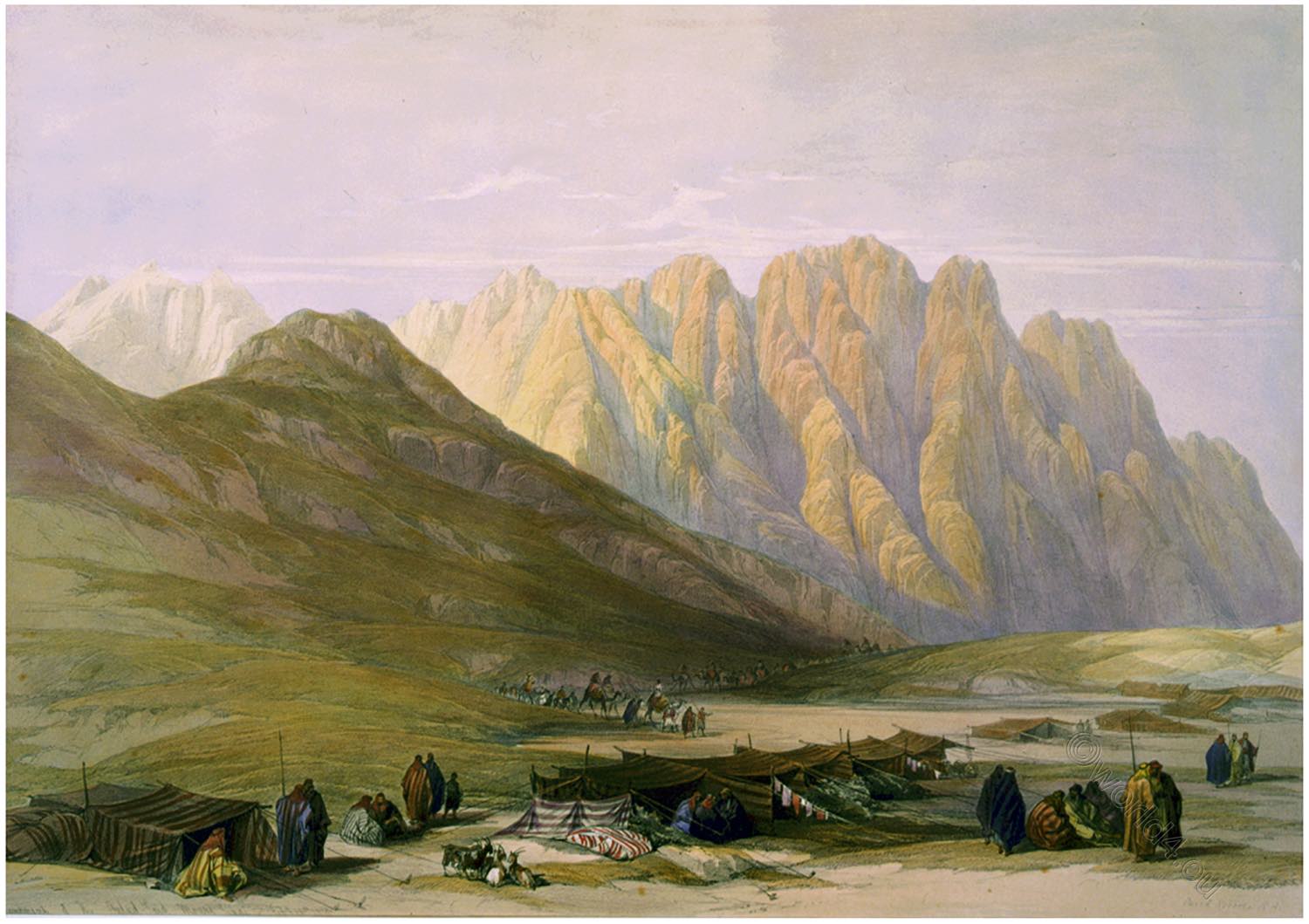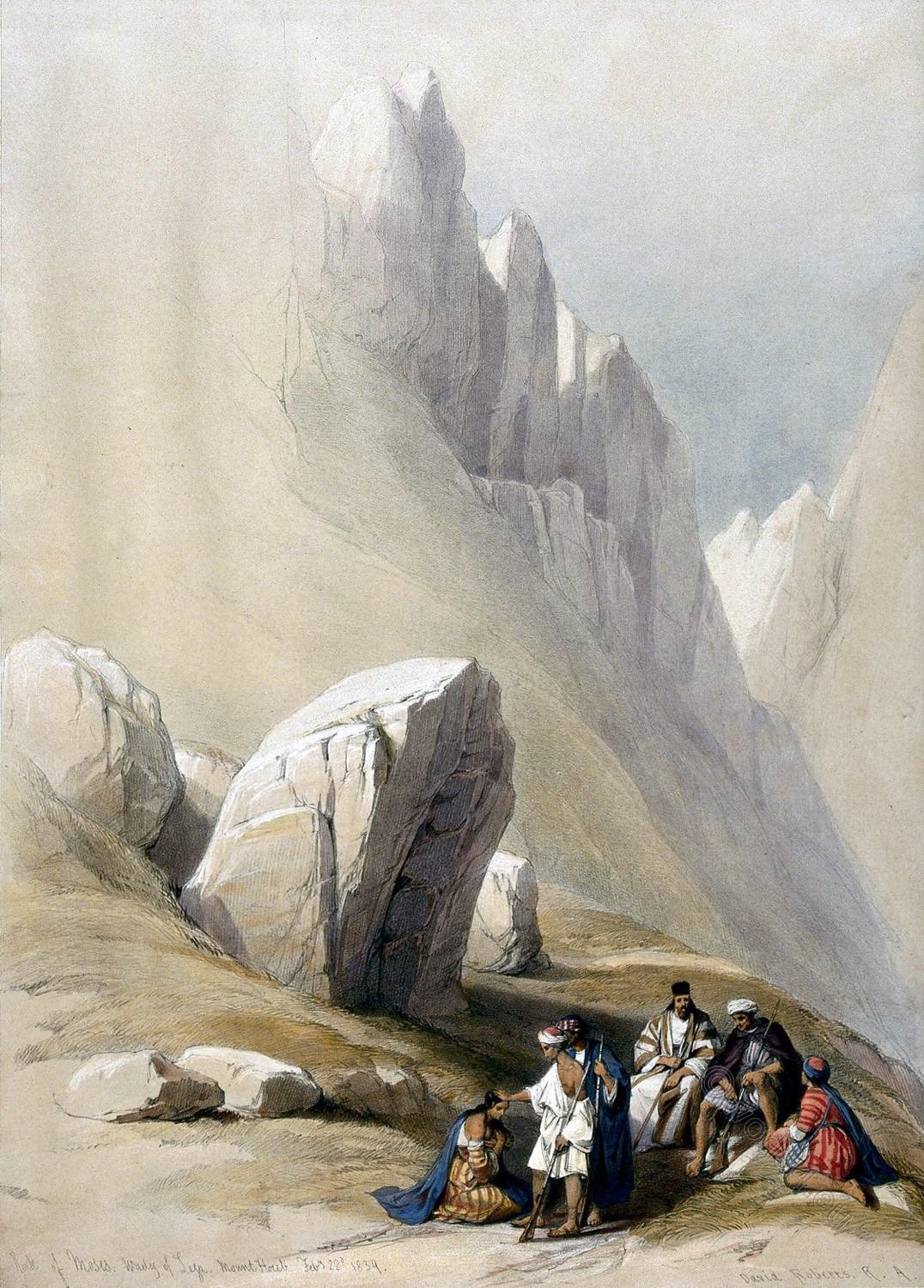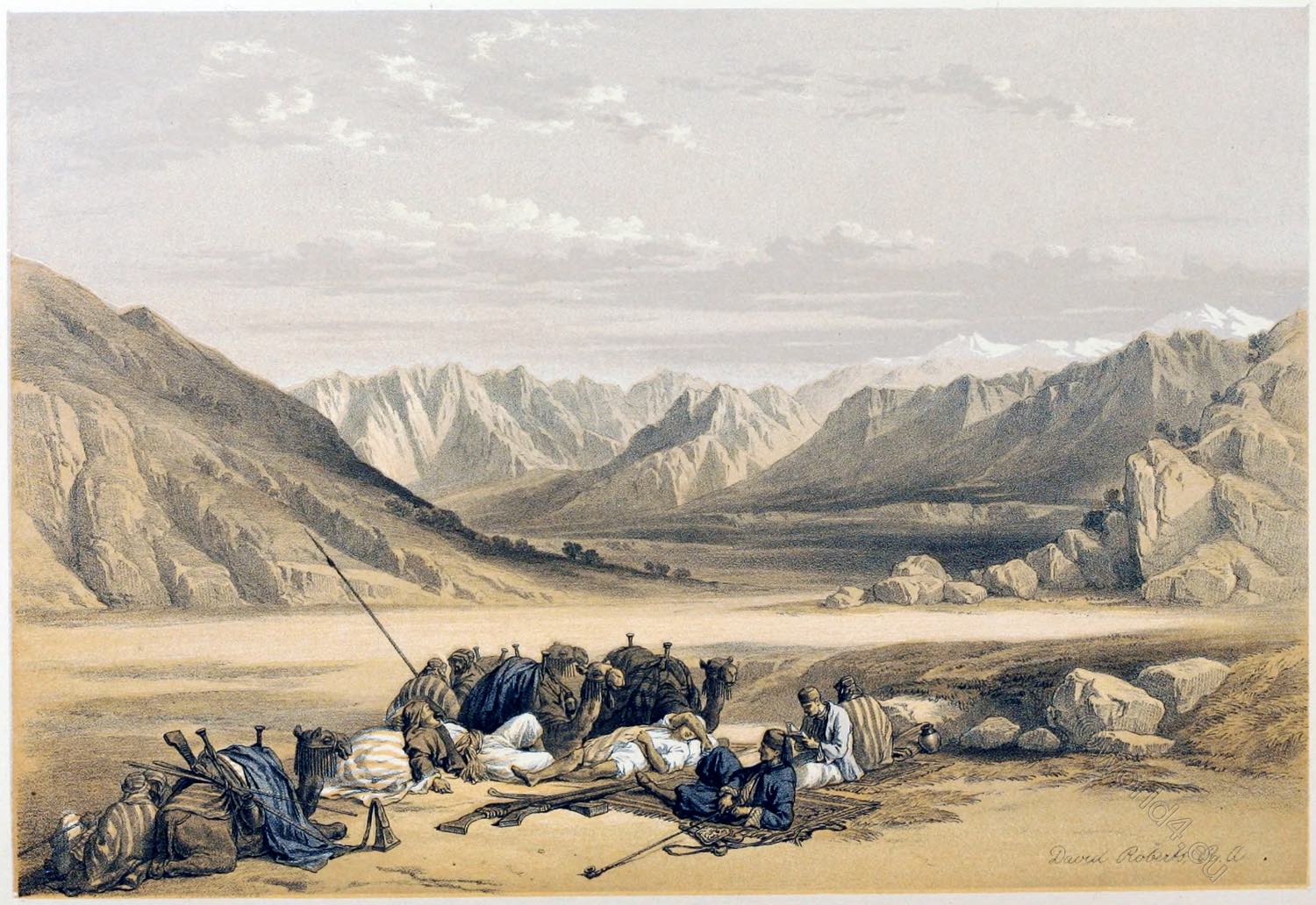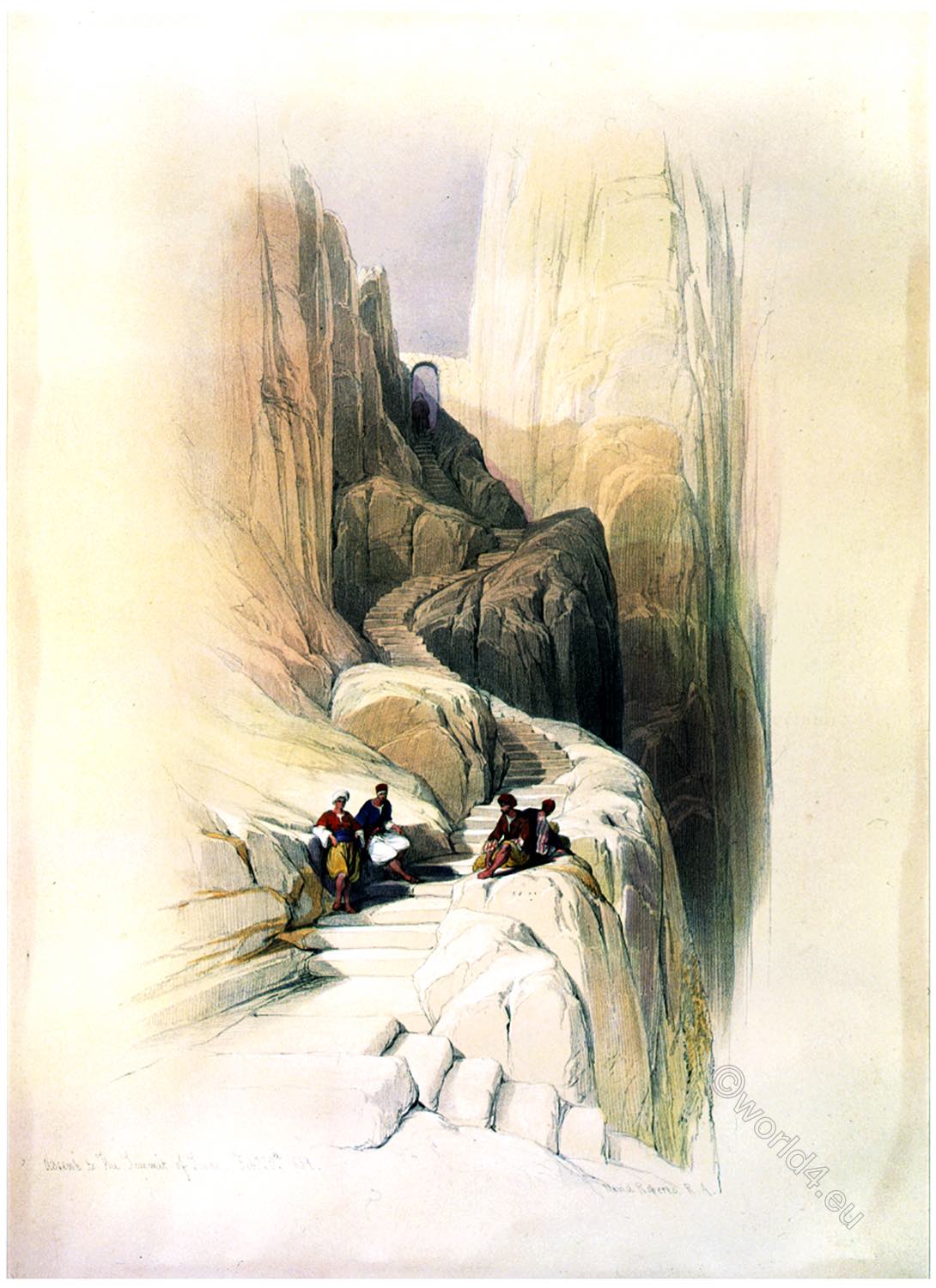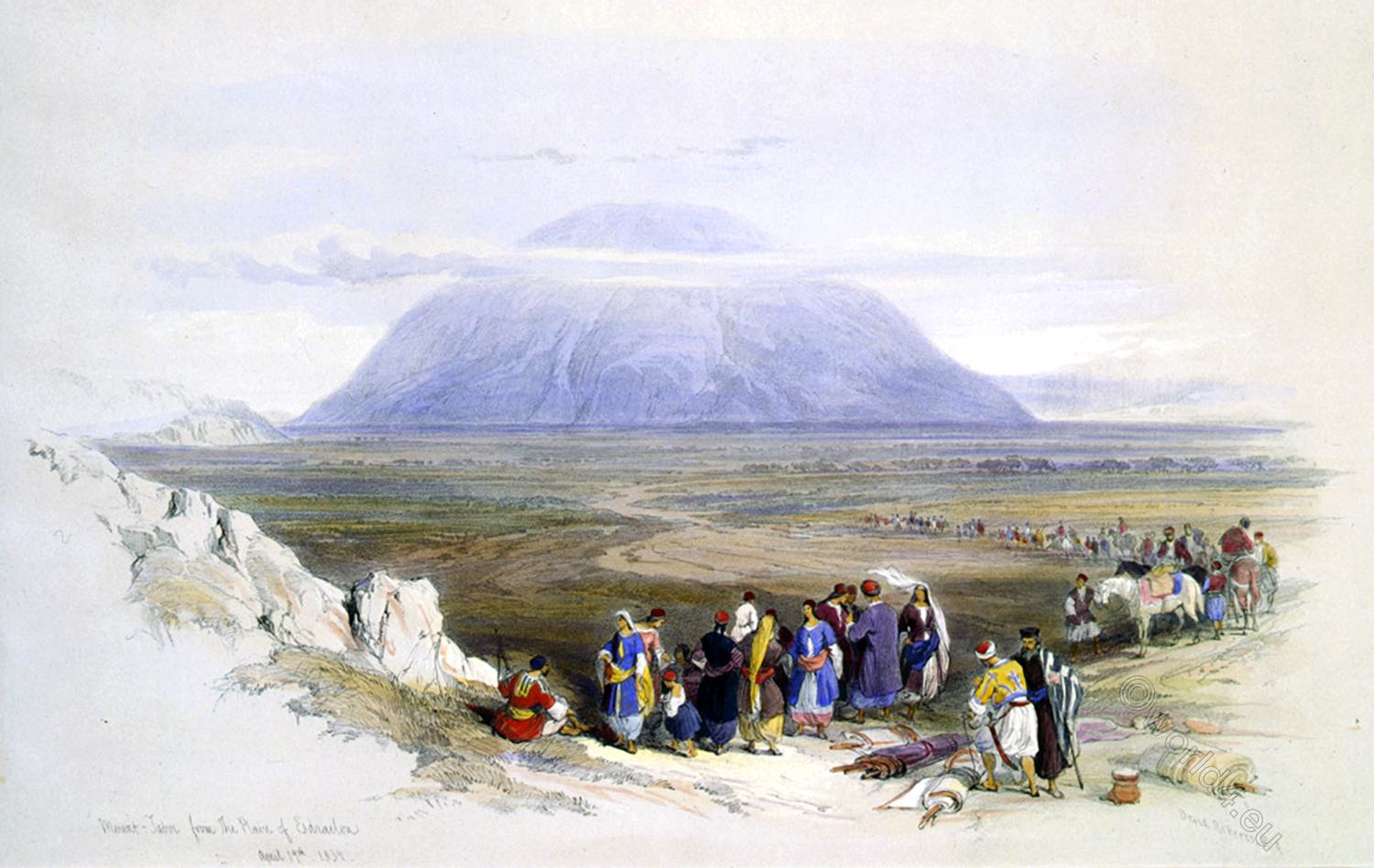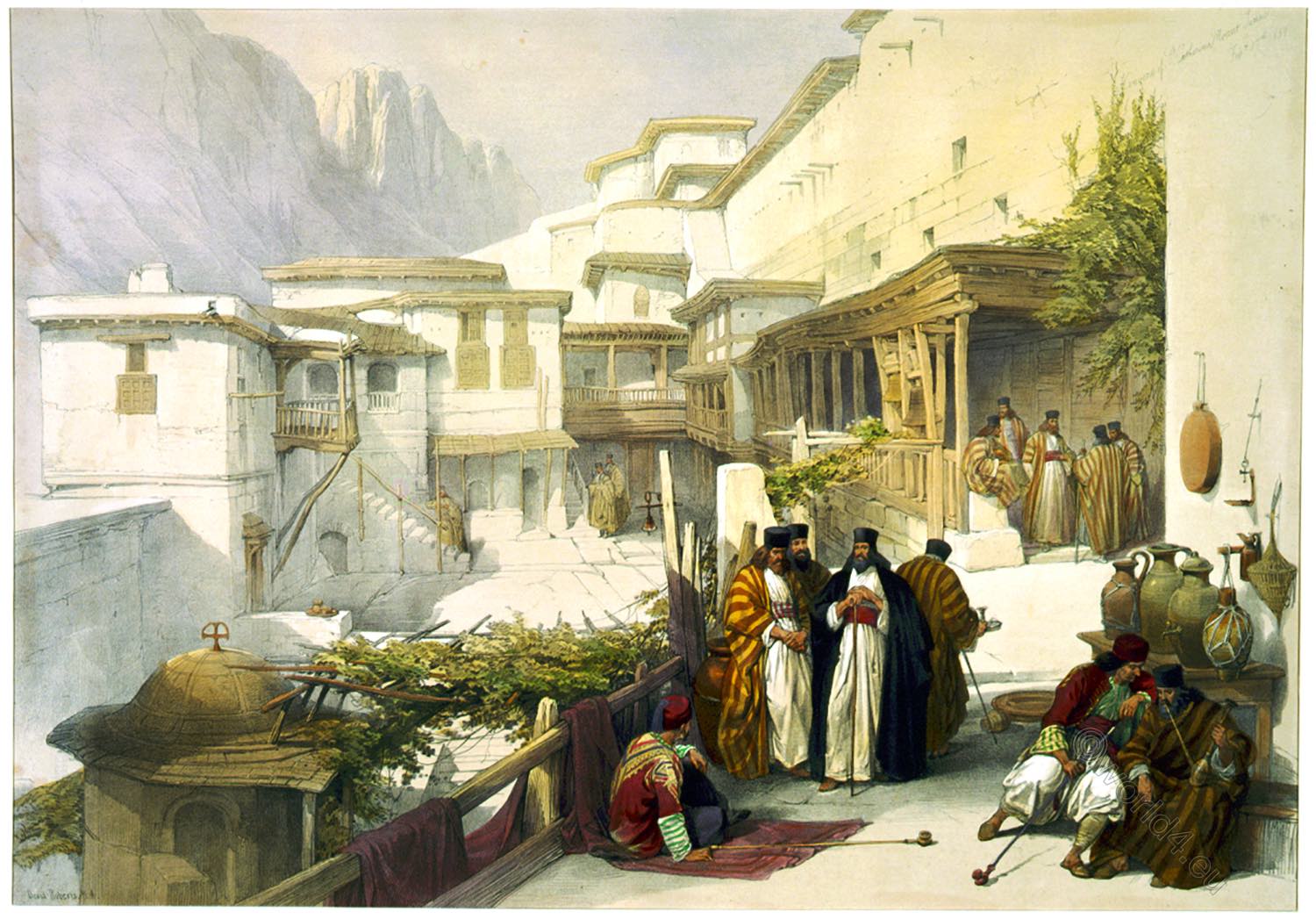
PRINCIPAL COURT OF THE CONVENT OF ST. CATHERINE
by David Roberts.
The Artist, in this View, introduces the costume of the Monks of St. Catherine. The Superior is distinguished by a black cloak; the rest of the Brotherhood wear robes of the striped brown cloth spun from the hair of camels and goats, such as are in use among the Bedouins.
The monks, who do not exceed twenty in number, are the tailors, shoemakers, bakers, brewers, carpenters, and other handicraftsmen, of the Convent. The Superior, at this period, was an intelligent and courteous person; he had travelled long, and in the chief countries of Europe; his visit to England was a subject on which he was eloquent. 1)
Most of the Monks are natives of the Greek Islands. In general, they do not remain in the Convent more than from four to five years; when they return to their country, proud of their having been “sufferers among the Bedouins;” some, however, have been here forty years.
Their rules are strict with regard to food and prayer; they are obliged to attend mass twice a-day and twice in the night, and they taste no flesh all the year round four days of the week they live on bread and vegetables; the latter they cultivate in a pleasant garden adjoining the building, into which there is a subterraneous passage.
The soil is strong, but in this climate, wherever water is in plenty, almost the very rocks will produce vegetation. Their fruits are oranges, lemons, almonds, mulberries, apricots, peaches, pears, apples, and olives, and all of the finest quality. Nebek trees ((Paliurus spina-christi Mill., Syn.: Paliurus aculeatus Lam.), and a few cypresses, over-shade the beds in which melons, cucumbers, and various kinds of culinary and sweet-scented herbs, are grown.
The garden is, however, seldom visited by the Monks, except the few whose business it is to keep it in order, for, although surrounded by high walls, it is not inaccessible to the Bedouins, who steal the fruit, and sell it to the Monks; but they leave untouched the other productions of the garden. 2)
The Convent contains eight or ten small court-yards, some of which are neatly laid out in beds of flowers and vegetables, with dates and many vines. Its apparent space within and the variety of its appropriation surprise every traveller.
The number of small rooms in the lower and upper stories formerly exceeded three hundred. It contains also store-rooms for provisions, bakehouses, &c, and besides the Great Church, it has Chapels for the separate worship of the Syrian, Coptic, Armenian, and Latin Christians, and, what naturally still more excites surprise, a Mosque; which, as has been already mentioned, was built by a species of compact, in the sixteenth century, to preserve the Convent from destruction by the Arabs.
1) Roberts’s Journal. 2) Burckhardt’s Travels.
Source: The Holy Land, Syria, Idumea, Arabia, Egypt, & Nubia, by David Roberts (British, 1796-1864), George Croly, William Brockedon. London: Lithographed, printed and published by Day & Son, lithographers to the Queen. Cate Street, Lincoln’s Inn Fields, 1855.
Continuing

